The 10 American concentration camp banners plus the 442nd Regimental Combat Team banner (Photo: Charles James)
The 56th annual event emphasizes the importance of unity in preserving freedom for all in the future.
By Charles James, P.C. Contributor
Around 2,500 participants braved cold, windy weather to join this year’s 56th Annual Manzanar Pilgrimage, themed “Truth, Justice and Democracy.” The event, held at the Manzanar National Historic Site located in Independence, Calif., took on added urgency and significance against the backdrop of the current Trump administration’s controversial policies regarding civil rights that are guaranteed under the U.S. Constitution.
(Related story: 55th Manzanar Pilgrimage)
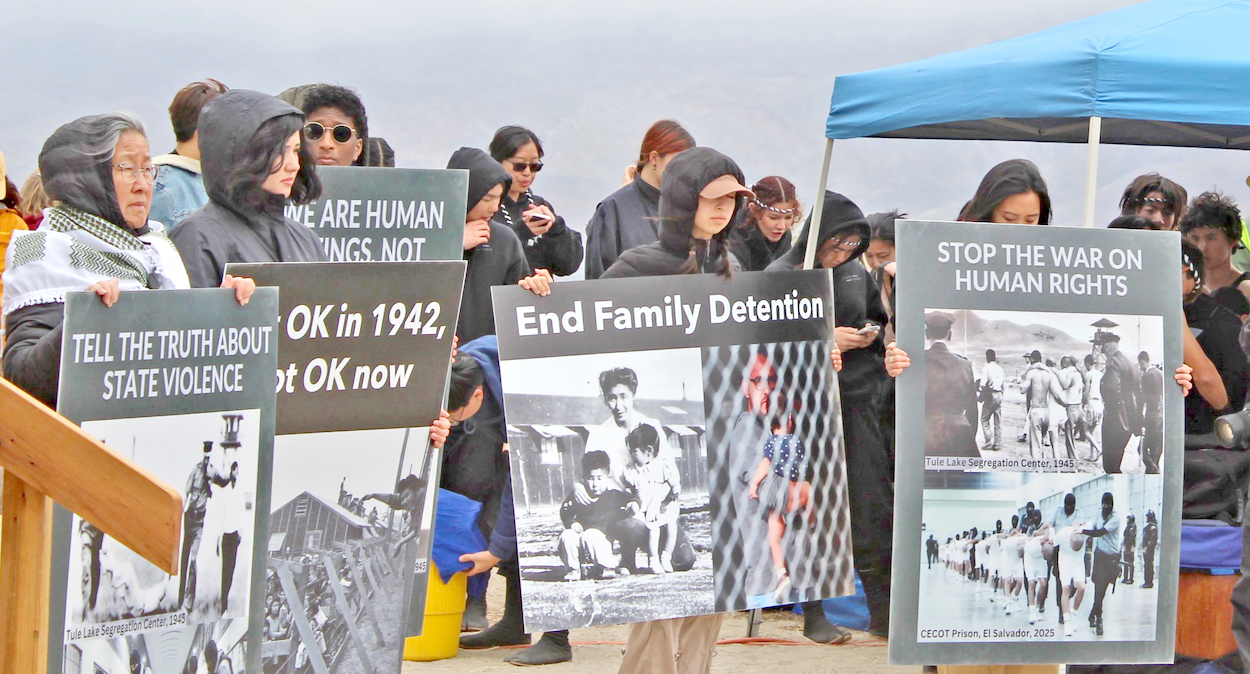
Visual reminders of the parallels of the wrongful incarceration of Japanese Americans during WWII and current human rights injustices today. (Photo: Charles James)
The unjust treatment of Japanese Americans during World War II is not only being echoed but also is being repeated, threatening rights to free speech under the First Amendment and the right to due process under the law in the Fifth and Fourteenth Amendments of the U.S. Constitution. These amendments prohibit denial of “life, liberty or property” without due process by federal and state governments.
Wakasa Memorial Committee Holds Night Ceremony at Manzanar Pilgrimage
Being in the country illegally (or unlawfully) is not a crime, yet the Department of Homeland Security is detaining tens of thousands of immigrants, most of whom have committed no crimes. While it is a violation of federal immigration law to remain in the country without legal authorization, it is a violation punishable by civil penalties, not criminal. Many of the detainees are being called and treated as criminals without any evidence or proof.
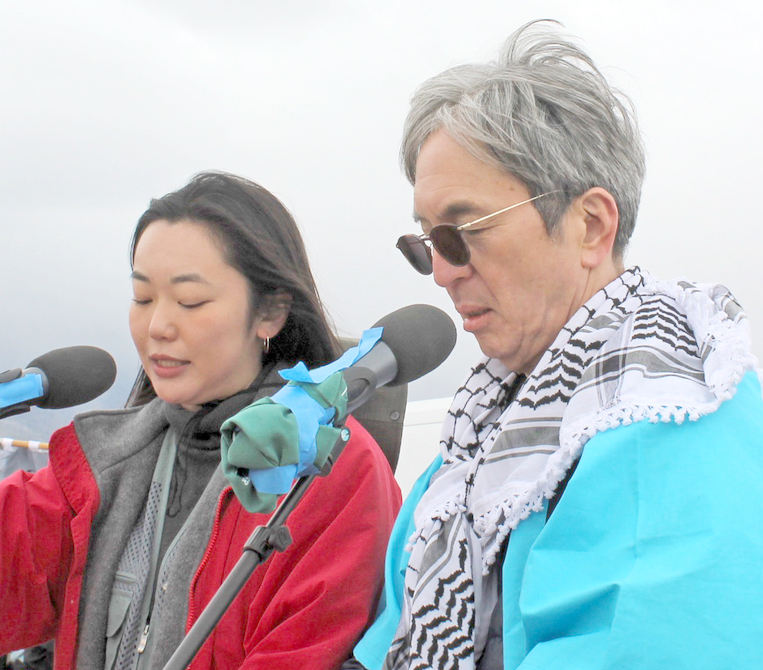
Manzanar co-MCs Seia Watanabe, who is also JACL National’s vp of public affairs, and Glen Kitayama. (Photo: Charles James)
The pilgrimage’s day program began with emcees Glen Kitayama and Seia Watanabe (JACL’s vp of public affairs) welcoming visitors on behalf of the Manzanar Committee.
Kitayama’s remarks emphasized the importance of unity, remembering our past and reminding attendees that it is happening again. He recalled his friend, the late Alan Nishio, telling participants at the pilgrimage eight years ago during President Donald Trump’s first administration that Manzanar “serves as a place and cautionary tale during crises.”
“A few weeks ago,” said Kitayama, “the Trump regime invoked the Alien Enemies Act of 1798 for only the third time in our country’s history. The second time this was used was 83 years ago to imprison our community during WWII. We cannot be silent on this issue and watch our democracy crumble.”
The Manzanar Committee dedicated this year’s pilgrimage to the memory of activists Gann Matsuda, Kanji Sahara and photojournalist Mario Reyes with the Rafu Shimpo newspaper. Sahara’s family attended the event and received warm applause from the crowd.
MNHS Superintendent Jeremy Scheier addressed the crowd, acknowledging the Manzanar Committee’s crucial role in establishing the site. He noted that it “attracts over 100,000 visitors annually who leave with a deeper appreciation of civil rights,” and he also expressed “gratitude for the committee’s efforts to preserve this history.”
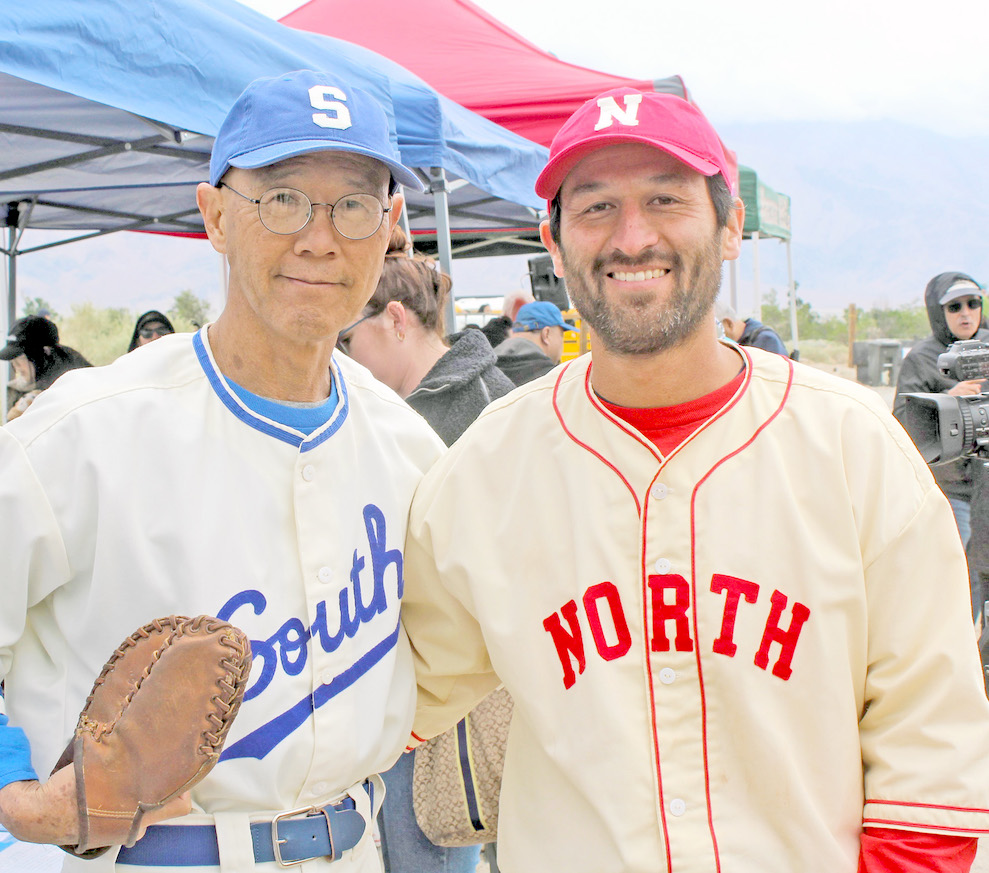
Volunteers Dan Kwong (left) and Sho Yamada helped to rebuild the baseball field that played a key role at the camp in the 1940s. (Photo: Charles James)
Following the superintendent’s comments, Jeremiah Joseph of the Lone Pine Paiute-Shoshone Tribe, told the audience, “It’s important to remember people’s rights, due process and the effort to secure our homelands.” He noted that “American values and Indigenous values include equality and justice for all.”
Joseph also mentioned the current fight in Inyo County over Conglomerate Mesa, where an open pit gold mine operation is being considered in an area considered sacred to native tribes. He expressed hope that those attending the pilgrimage will become involved and support their cause to stop the mining project.
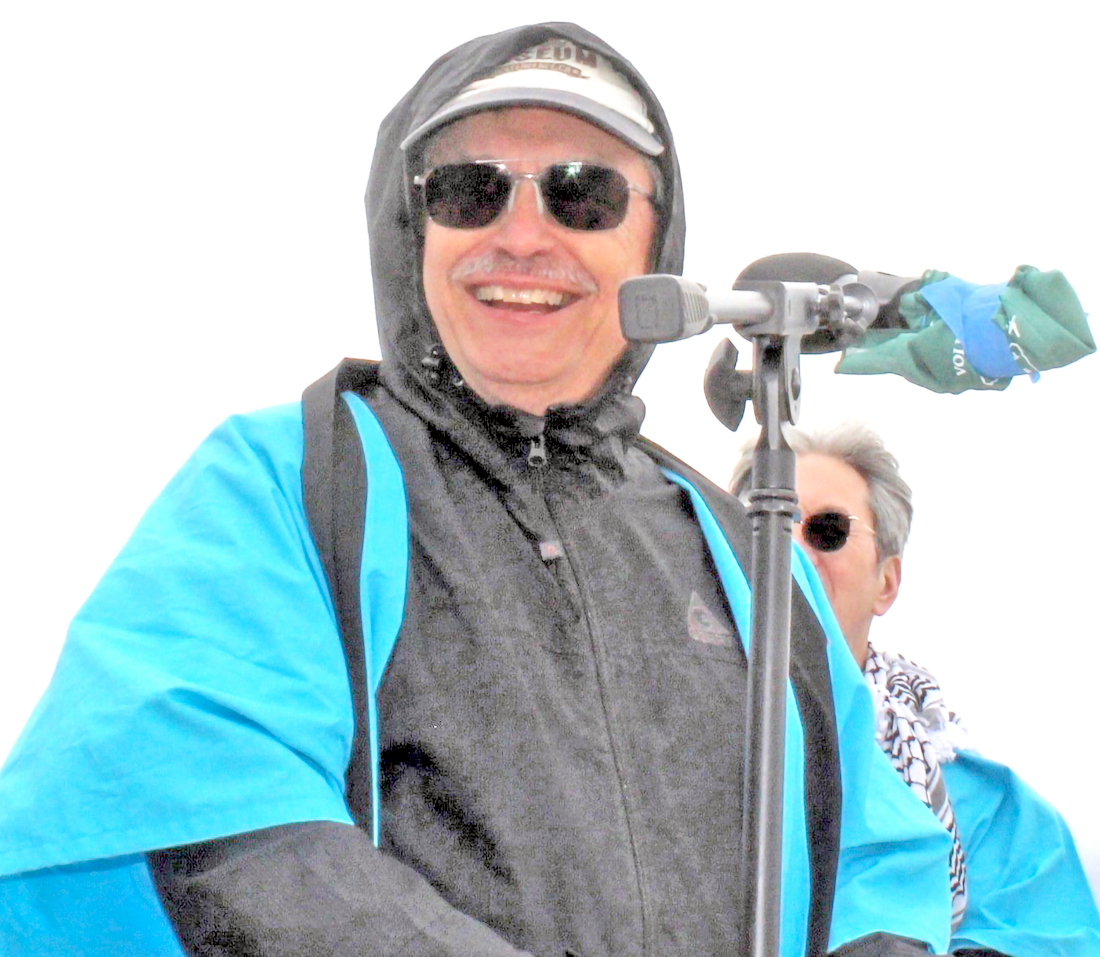
Manzanar Committee Chair Bruce Embrey (Photo: Charles James)
Bruce Embrey, chair of the Manzanar Committee, then gave his opening remarks. Embrey is the son of the late Sue Kunitomi Embrey, an activist and longtime chair of the Manzanar Committee. She established the annual Manzanar Pilgrimage and obtained National Historic Site status for the former concentration camp.
Embrey said, “Our pilgrimage and the Manzanar National Historic Site are more important today than ever before.” He noted that efforts are underway “to erase our history on the heroism of the 442nd, 100th battalion and the MIS, which have been removed from government websites.”
Embrey also mentioned attempts to “erase the stories of Jackie Robinson, the Navajo and Cheyenne code talkers and so many others who fought to defeat fascism and preserve democracy and are in jeopardy as well.” The Stonewall National Historic Site, the birthplace of the modern-day LGBTQ rights movement, has also had its website rewritten to exclude the trans community.
“This is not just insulting,” said Embrey, “This is dangerous. It is dangerous because narratives matter.” He asked those present to remember that “the government, pushed by white nationalists and large corporations, fabricated an entire narrative that our families were a threat to America’s national security.” That “lie,” he noted, “led to the unconstitutional, illegal incarceration of more than 125,000 persons of Japanese ancestry, both citizen and immigrant alike.” (Note: Embrey’s complete remarks can be found on the Manzanar Committee website at www.ManzanarCommittee.org and on YouTube.)
The Manzanar Committee, along with other organizations, has advocated for reparations for the Black community, land and treaty rights for all Indigenous peoples, the enactment of fair and humane immigration laws, an end to discrimination of the LGBTQ+ community and an end to genocidal violence in Gaza.
Michele Nakamura and Wendi Yamashita gave tribute to Manzanar Committee member Gann Matsuda, who passed away on Oct. 12, 2024, at the age of 61. Both speakers met Matsuda as students and expressed their profound respect for his mentorship and commitment to Japanese American history and student activism. Nakamura then read a remembrance poem written by Lianne Urada titled “Gann Was in Our Corner.”
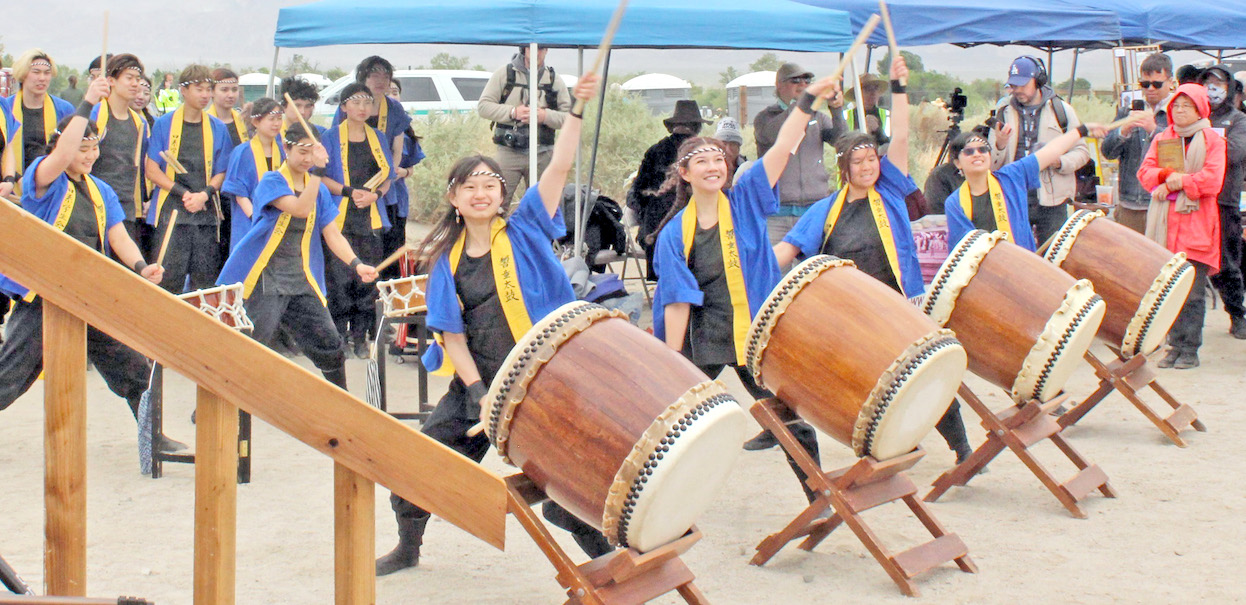
UCLA’s Kyodo Taiko group performed during the pilgrimage program.
Musical interludes were provided before, during and at the end of the pilgrimage program by Bonbu Stories, UCLA Kyodo Taiko and the multitalented Japanese artist Ken Koshio from Phoenix, Ariz.
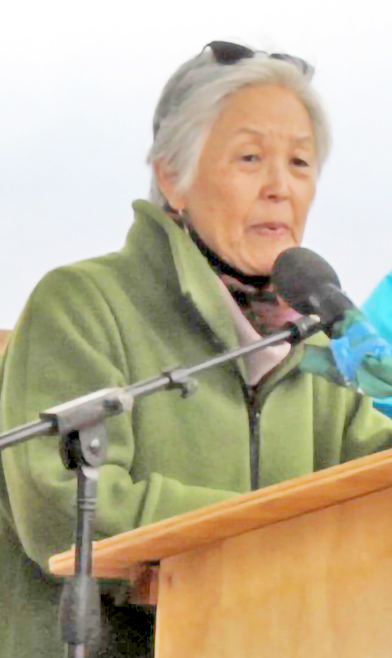
Keynote speaker Dr. Satsuki Ina delivered a powerful address on the anti-democratic threats posed by the U.S. government. (Photo: Charles James)
The program’s keynote speaker, Dr. Satsuki Ina, is a psychotherapist specializing as a community trauma consultant. She acknowledged Sue Kunitomi Embrey for her contributions and advocacy for truth, justice and democracy, stating that “she has been an inspiration to me all my life.”
Ina told the audience that “what is happening in our country is personal. It’s you and me. It’s Japanese Americans, it’s people of color. We are once again being targeted with oppressive and repressive policies and practices that will essentially lead to the destruction of our democratic country.”
According to Ina, the Alien Enemies Act of 1798 made it possible to begin arresting and removing not just aliens but also nonaliens, including American citizens, with 125,283 people of Japanese ancestry taken from their homes and losing everything they owned. She says it resulted in decades of trauma that are still being dealt with today. Illegal loyalty oaths and renunciation of citizenship by some 5,000 incarcerees added to the suffering.
This suffering continues today because “some people look like they’re immigrants.” Putting it bluntly, Ina said that we are faced with “what is, in fact . . . a fascist regime hell bent on a nationalistic racist policy of redeeming white supremacy and eliminating those considered unwanted.”
Ina ended by saying, “We need to stop the continued multiplication of detention sites. The intention of this administration is to remove and incarcerate 11 million immigrants at 500 detention sites. We need to speak loudly, educate people about our history and organize.”
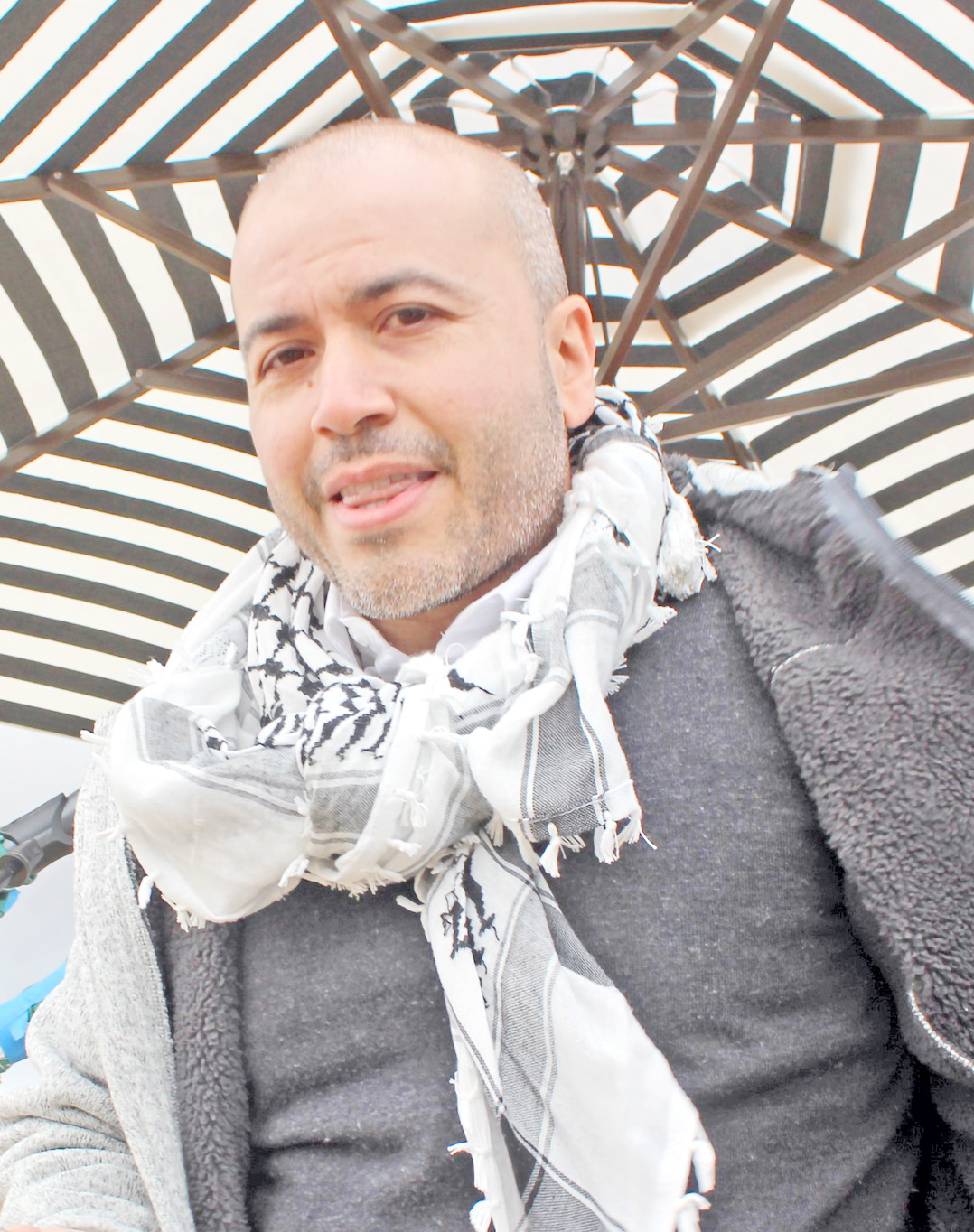
CAIR-LA attorney Ramsey Judah spoke on behalf of refugees. (Photo: Charles James)
Attorney Ramsey Judah with the Council on American-Islamic Relations in Los Angeles (CAIR-LA) said, “As a Palestinian American, seeing the pictures and videos in this camp reminds me of all the refugee camps I grew up seeing in Palestine. I can tell you: People forced from their homes look the same everywhere. The fear on their faces looks the same. The pain in their hearts is the same. The look of hopelessness is the same.
“All of our struggles are connected — and so our communities must be as well,” Judah continued. “Our unity will prevent another Manzanar, another genocide, another Muslim Ban and an end to the dehumanization and unjust targeting of immigrants. Now is the time to unite in ways that will not only bring true freedom and justice on this land for all, but also reparations for systematically oppressed people and land back to our indigenous communities here and around the world.”
Judah was followed by Jillian Stineman from UCLA’s Nikkei Student Union. Her family was incarcerated in Manzanar during WWII and believes her awakening as a Japanese American and an Asian American began with Manzanar.
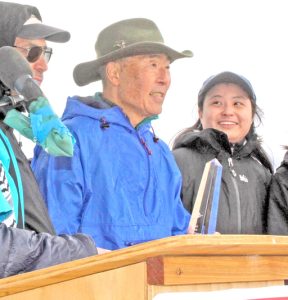
Rex Takahashi (middle) received the prestigious 2025 Sue Kunitomi Embrey Award. (Photo: Charles James)
Stineman expressed concern about the continuing Israeli genocidal assault on Palestinians in Gaza with hundreds of Palestinians killed each day. She also stated that critiques of Israel are not inherently antisemitic.
“We often hear the phrase “never again,” said Stineman, “an eternal promise that we will no longer allow what happened to Japanese Americans to happen to anyone else. If I have learned anything during my college career, it is understanding that the rights we have today, the right to free speech, the right to vote, the right to an education, the right to be legally integrated into society were won very recently in history.”
The prestigious Sue Kunitomi Embrey Legacy Award was awarded to Rex Takahashi, an original member of the Manzanar Committee since 1969. He developed the text displayed on the California Historical Landmarks plaque at Manzanar. Despite very determined resistance from the California Department of Parks and Recreation, Takahashi’s draft of the text with references to Manzanar as a “concentration camp” and listing “hysteria, racism and economic exploitation” as causes that created Manzanar, prevailed.
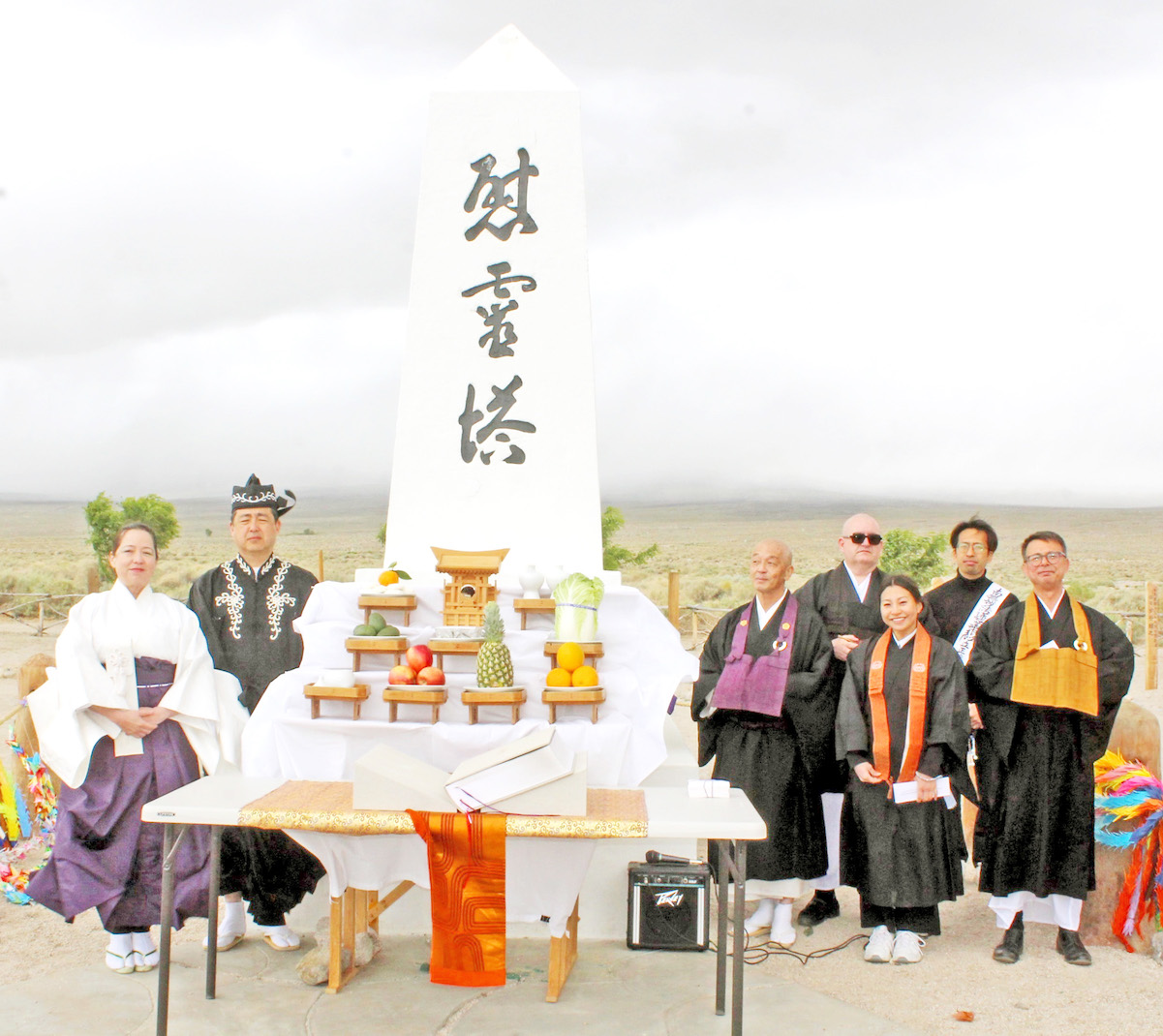
An interfaith religious service was held at the Manzanar Cemetery’s Soul Consoling Tower. (Photo: Charles James)
The day program closed with the traditional Camp Roll Call and Banner Procession of the 10 concentration camps, which include a banner honoring the 442nd Army Regimental Combat Team, the country’s most-decorated combat unit in American military history for its size and duration of service. That was followed by a procession to the Soul Consoling Tower Monument and an interfaith religious service. The evening’s events included the Manzanar At Dusk Program and a memorial held by the Wakasa Memorial Committee to remember two Nisei killed during the Manzanar Uprising of Dec. 6, 1942.




